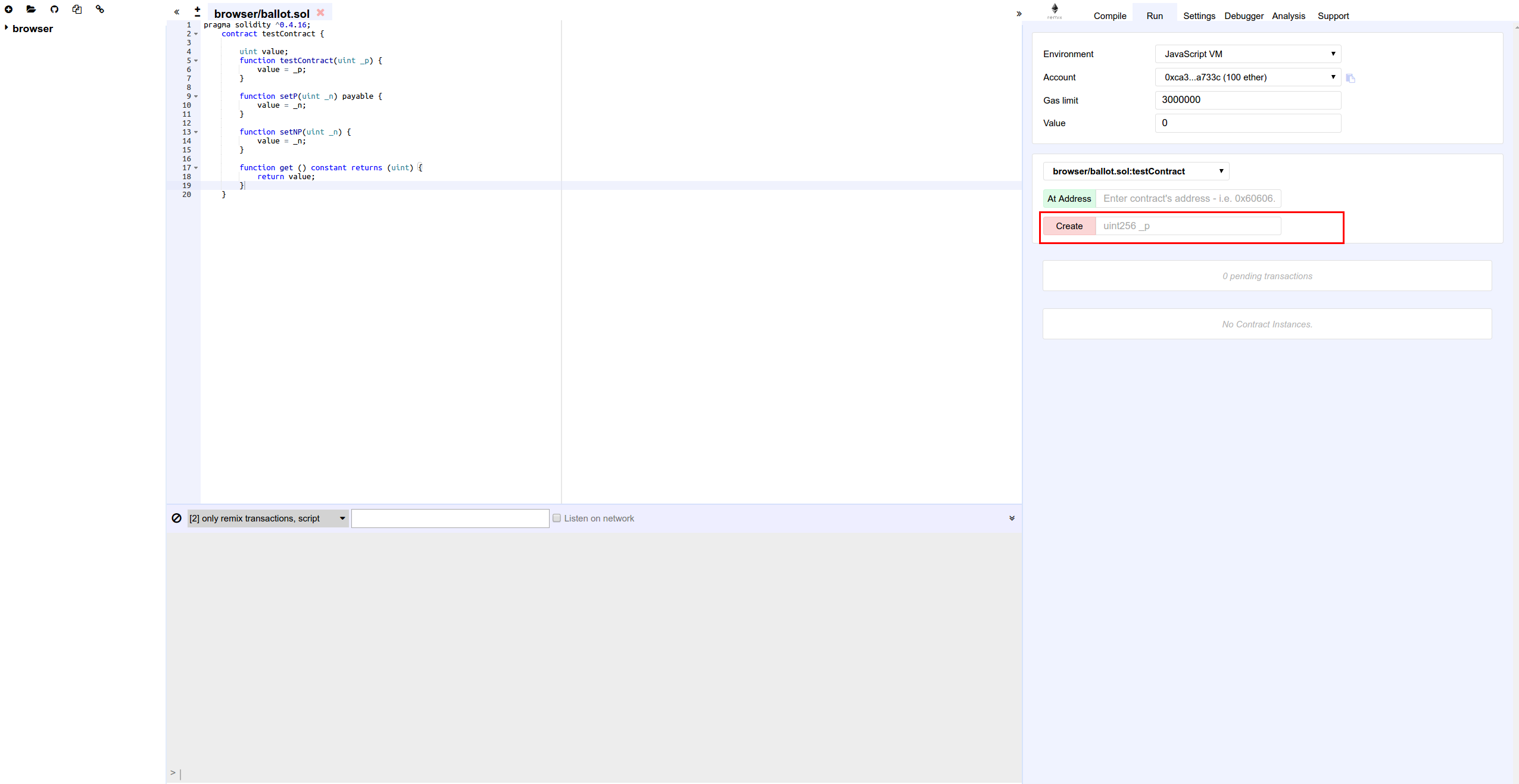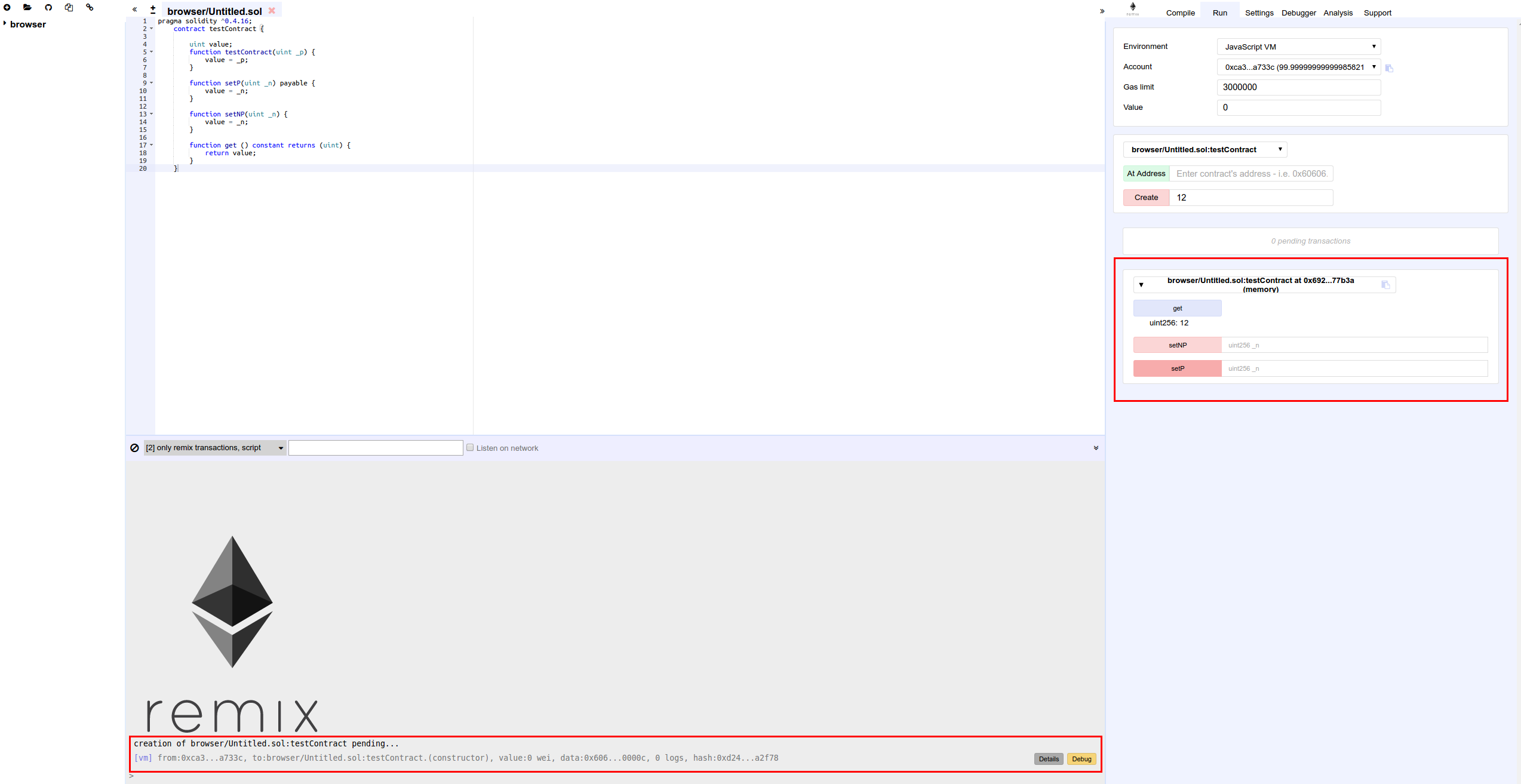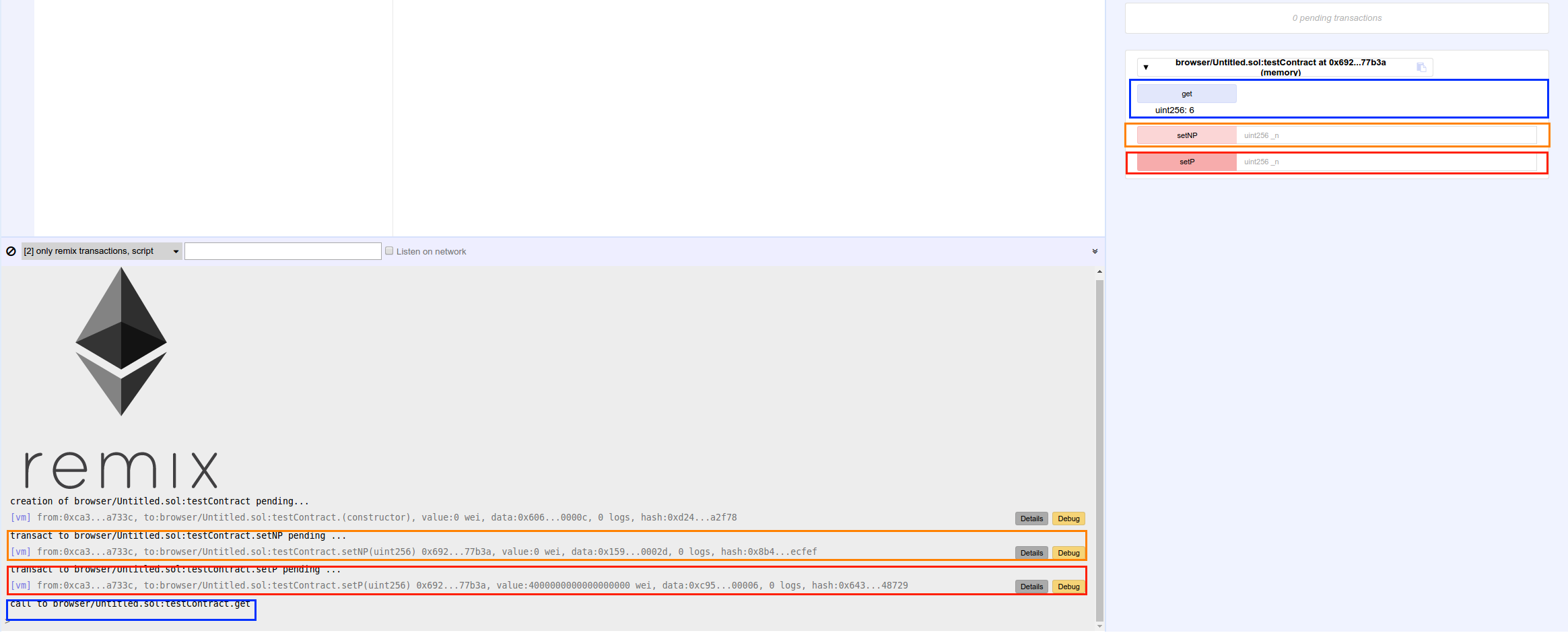2.9 KiB
Quick Start using the JavaScript VM
There are 3 type of environments Remix can be plugged to:
Javascript VM, Injected provider, or Web3 provider. (see
../run_tab)
Both Web3 provider and Injected provider require the use of an
external tool.
The external tool for Web3 provider is an Ethereum node the tools for
Injected provider are Mist or Metamask.
The JavaScript VM mode is convenient because each execution runs in
your browser. Thus reloading the page will restart Remix with an empty
state.
So for performance purposes, it might also be better to use an external node.
Selecting the VM mode
Make sure the VM mode is selected. All accounts displayed in Accounts
should have 100 ether.
Sample contract
::
pragma solidity ^0.4.16;
contract testContract {
uint value;
function testContract(uint _p) {
value = _p;
}
function setP(uint _n) payable {
value = _n;
}
function setNP(uint _n) {
value = _n;
}
function get () constant returns (uint) {
return value;
}
}
This contract is very basic. The goal is to quickly start to create and to interact with a sample contract.
Deploying an instance
The Compile tab displays information related to the current contract
(note that there can be more than one) (see ../compile_tab).
Moving on, in the Run tab select, JavaScript VM to specify that you
are going to deploy an instance of the contract in the JavaScript VM
state.
The constructor of testContract needs a parameter (of type uint).
Give any value and click on Create.
The transaction which deploys the instance of testContract is created.
In a "normal" blockchain, it can take several seconds to execute. This
is the time for the transaction to be mined. However, because we are
using the JavaScript VM, our execution is immediate.
The terminal will inform you about the transaction. You can see details there and start debugging.
The newly created instance is displayed in the run tab.
Interacting with an instance
This new instance contains 3 actions which corresponds to the 3
functions (setP, setPN, get). Clicking on SetP or SetPN will
create a new transaction.
Note that SetP is payable (red action) : it is possible to send
value (Ether) to the contract.
SetPN is not payable (light red action) : it is not possible to send
value (Ether) to the contract.
Clicking on get will not execute a transaction (blue action). It is
not necessary to do so because get does not modify the state (variable
value) of this instance.
As get is constant you can see the return value just below the
action.


